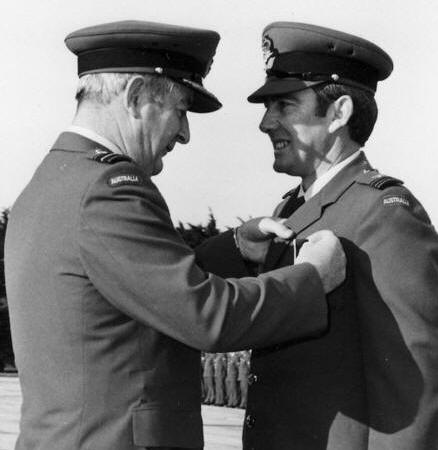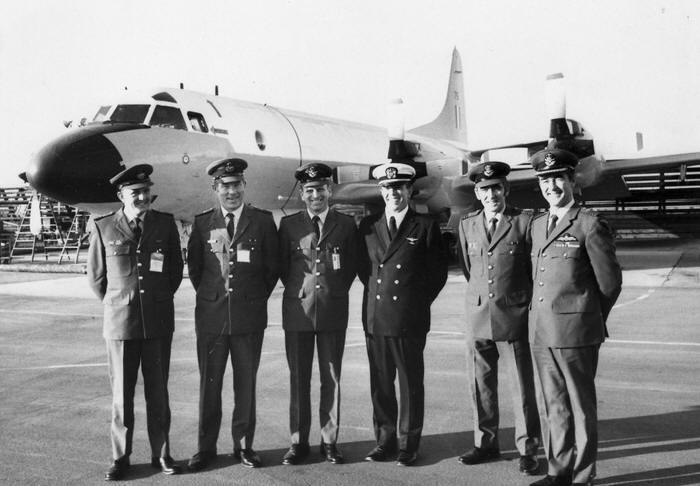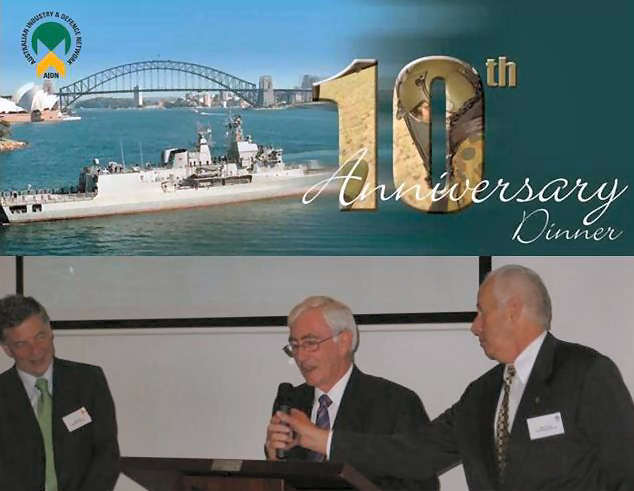|
Radschool Association Magazine - Vol 26 Page 11 |
|
Privacy Policy | Editorial Policy | Join the Association | List of Members | Contact us | Index | Print this page |
|
Kevin J Carroll.
Kev joined
the RAAF in 1954 as an adult trainee. He had attempted to join as an
apprentice in 1953 but, at
From that huge pay packet the ATO took Tax of one shilling and three pence per day ($1.82 per fortnight), about 5.8%.
After completion of all the signing on procedures, he was given a rail ticket, told to report to Spencer St RTO, and travelled up to Sydney – 3rd class, for rookie training at Richmond. Apart from the usual BS, rookie training was uneventful – he had been a school cadet and as such, was familiar with drill, parades, rifles and people shouting orders at him. As the youngest member on rookies (he thinks it was Course # 148) and being a non drinker- he was detailed off to make sure that the ‘mature drinkers’ made the last train back to Clarendon/Richmond on Saturday or Sunday night.
|
|
After
rookies, everyone was posted down to Wagga Wagga, to RAAF Forest Hills
where they did their Basic Fitting course. Wagga was freezing cold and
they were bunked up in unlined igloo huts, overcrowded with 20 or more to
a 16 man hut and had the use of the wonderful, fully ventilated, ablution
blocks. It was not a very inspiring period, as most of the potential
crystal crackers could see no relativity between filing steel blocks and
electrons. His Wagga period was mostly uneventful, except for the death of
one course member (which was very eventful), the poor bloke was an ex RN
marine, and he spent a period in cells after a fight, without appropriate
medical treatment.
After passing all the metal basher instruction, building a receiver chassis, learning how to use a bastard file, and other stuff never to be used again, it was onto the train and back down to Vic to RAAF Ballarat for the main event! This was a case of out of the ice cube container and into the freezer. Ballarat was just as cold as Wagga but it was damp as well, but at least at Ballarat they played ‘proper football’. For Kev it was a homecoming, being a Ballarat boy, and there was always a home cooked meal and of course when the pile got un-manageable, the opportunity to ‘take the washing home’. He was put onto number 11 course which turned out to be an air course. As usual, everyone started the course with great enthusiasm and expectations, however, from around twenty starters only about half finished. Fifteen months seemed like an eternity, however; finishing was a great achievement.
|
|
|
|
11 Radio Technicians Course, 30 June 1955 – 31 August, 1956. Back row, L-R. Tony Mumford, Col Lacey, George Creswell, Don Horton, Kev Carroll, Harry Howarth. Front row, L-R Barry Aspinall, Doug Morgan, Reg Allan, Bill Brennan, Laird McLachlan,
|
|
Ambition is a poor excuse for not having enough sense to be lazy. |
|
Kev says there were many stories and pranks but too many to tell here! – perhaps one day……
After successfully passing out at Ballarat, the rumour mill
swung into full gear and the course pre-posting discussions included the
perceived best and worst assignments – of which Sale was considered the
worst! However, as
Kev Rosser pointed out recently, for an Air Tech it was probably one
of the best initial assignments.
There was a range of aircraft and therefore equipment on which to work – Tiger Moths (‘A’ Service – bottle brush through the speaking tube) Winjeel, Wirraway, Mustang, Vampire, both single and dual, Dakotas and the mighty Lincolns. “Yes, there was a purpose to learning that Pye Green was the signal cable and Pye Purple the synch pulse – I think!”
For a young single bloke, Sale was well located – only 3 hours from Melbourne (2 if you were with JB in the red SSS – tb) and within a hard day’s drive of Sydney. Locally there was the beach for the swimmers and the lakes for the fishermen. The worst incident during his stay at Sale was the theft and crash of a Dak following the airmen’s Christmas Ball of 1958. The culprit, an engine mechanic, died in the crash. Kev says the highlight of his time at Sale was meeting Jean, his wife of some 48 years, but as he says, who’s counting??. |
|
The trip from Laverton to Changi took about a week, with the obligatory engine change in Darwin and a stop over in Singapore. From Singapore to Butterworth it was onto the ‘Butt P’ Bristol Frightener and finally there they were, complete with screaming Sabres and exploding Canberras, along with a variety of strange looking RAF birds (aircraft that is...).
|
|
The Army was also resident on Base, along with a host of UK
Army conscripts, consequently; there was always plenty of
excitement/entertainment in the mess and in the NAAFI and of course, there
was always Penang Island a short ferry trip away.
While he was ‘Pooling’ at Laverton, he had spent as much time as possible with Jim Dilworth and John (Ted) Schmidt who showed him the “ins and outs” of some of the Sabre avionics, he reckons this was better than cleaning toilet blocks and painting rocks white, and this meant he was of some use at 3 Sqn right from the start, however, his stay in the tropics was cut short after succumbing to some allergy and he was posted to the Neppies at 11Sqn Richmond.
Working on the old P2V5 Neppy was a lot different to working on Winjeels and Sabres, as they were a flying radio shack. Kev says back in 1960, 11Squadron was a great Squadron, it had a great bunch of blokes, there was lots of work and lots of opportunity to visit different places. He was promoted to Cpl in 1961 and posted to 2AD in 1962.
"2AD radio, what an experience!! At least there were no duty crews, but there was a poor second prize, the old guard duty. Blokes today wouldn’t believe that we all took turns at doing “Guard Duty”, these days the only people who do it are Adgees and Civvies".
At the depot you learned about electroplating, crackle finishes and how to keep track of all those little bits of hardware that kept all the electronics in place! Here he was introduced to the APS-20 and APN-59 radars, with lots of black boxes and CRT’s in between.
|
|
In 1964 he
was promoted to Sergeant and posted to HQOC Glenbrook, where there was one
lonely position for a Sgt RadTech Air. What a great job! No overalls, no
cold and windy tarmac and lots of social life and golf!
After two years on the Certificate course, my academics had risen above the level required for commissioning. I had made the decision to apply for and get commissioned or I was going to get out. I was commissioned in early 1967 and posted to HQSC Spares Assessing! Not my first choice by any means. However; over morning tea with the AOC, I saw an opening and dropped the word that my three years of study would be wasted unless I stayed in the Sydney area for another year. Sometime things fall into place! A position for a junior RadO had just been established at 38Sqn Richmond and it soon had my name on it!"
|
|
Why do psychics have to ask you for your name? |
|
38Sqn, the
old Caribou, certainly not the most technologically challenging aircraft,
however; as his position was OIC AEMF, he had more than enough to deal
with. It was interesting times with the rotations to Vietnam and pilot
training and conversion courses included a 3 month detachment in PNG
resulting in lots of takeoffs and
But it was all too good to last, and in 1970, just when he had found where the coffee and sugar were stored, he was posted to De(s)pAir in Canberra. His assignment was so vague that very few people had heard of it! Turned out it was a cell charged with the task of re-writing Air Force Orders and Air Board Orders!! How exciting!! He was shut up in a room with 2 AdminOs, 1 EquipO, 1 GD and a WW2 Nav as boss!! His first task was to re-write a section on the ‘Care and Feeding of Guard Dogs’ - an essential task to be sure!! Having a few friends in the department, he soon managed an internal posting to DTels where the Director was Gp Capt Frank Doherty, a real gentleman. He says it was a good three years, work wise, only thing wrong, it was in Canberra.
|
|
Now that Kev was settled into the work in Canberra, and was enjoying it, the RAAF decided it was time for another posting for him, and they found a spot at Radschool at Laverton. Once again, it was a reasonable job, after Jim Thorn (Wng.Cdr. W.J. Thorn, OIC Radschool Nov 1973 – Apr 75) and he had defined their turf, but Laverton was not his favourite part of the country! The job as OIC Support Flight was a doddle – good NCO’s who required little supervision and knew the ropes better than he did. His secondary duty was Cinema Officer and, being a movie buff, it was just what the doctor ordered. His first venture into Melbourne to choose the movies for the month turned out to be a learning experience – he chose some good M, MA and even R movies, only to be told by the cinema operator that we couldn’t show anything higher than PG, because of the apprentices.
|
|
Radschool staff, 1973 L-R. Geoff Matthews, Ron Baxter, AVM Jim Rowland, Kev Carroll and Laurie Lindsay. |
|
To steal ideas from one person is plagiarism; to steal from many is research. |
|
The takings
at the cinema were very low at that time, necessitating an operating
subsidy. What to do? He
A number of WW2 aircrew guys, who had been given Engineering jobs after the war, were time expired and a number of senior Flt Lts were posted into their jobs. Kev had Townsville as a posting preference – second to overseas – so the system sort of worked!
In the 70’s, BRadO Townsville was probably one of the best postings for a RadO, along with Darwin. In the early to mid 70’s it was a very active base. The HF Upgrade was under way with both the receiving and transmitting stations being relocated. Additionally, the ATC Surveillance Radar was being installed at Palleranda. Kev had the secondary duty of Base Works Officer, which necessitated frequent visits to building sites – no time to get bored and some time to check out the crab pots and fishing spots.
Photo at right, Townsville, 1975. L-R: Wally Pearson, Reg Rowle, Kev Carroll,
|
|
His Assistant BRadO had the engineering and comm centre side of things covered and two crusty WOs took care of the day to day jobs. In his second year at Townsville, and now a Sqn Ldr, he was appointed – by direction – PMC, which almost became his full time job.
Even that was satisfying, though, as he decided to build a new downstairs bar at the Officer’s Mess, on a budget of $200!! This is where networking came in, and he used up a lot of friends and favours, but it got done and ended up a pretty reasonable job!
One of the highlights of his time as PMC was an impromptu visit to the mess by the then Prime Minister, Gough Whitlam.
And, as Murphy’s law dictates, it happened on his first night as PMC and was a real adventure.
But that is definitely another story for another time!
|
|
Another famous - or imfamous - VIP hosted by Kev when he was PMC was the then Governor General, Sir John Kerr. L-R: Sir John Kerr, Kev’s wife Jean and Kev Carroll at the Townsville Officer's Mess. |
|
|
|
In mid 1976 he was posted to Washington DC. This was a much
sought after job and Kev insists that the fact he spent a bit of time
fishing with a retiring AVM, on the Townsville Crash Boat, had absolutely
nothing to do with him getting it.
So, in 1976, which was the US’s bi-centennial year, it was pack up yet again, and off to Washington DC – to work in the Australian Embassy and what a great posting it was! The Carrolls arrived in the US just before the fourth of July and were exposed to the nationalistic fervour of the American people.
Right: In 1973, AVM Newstead presented Kev with his long service medal as a reward for 20 years service and 20 years of undetected crime.
His position on the Air Attache’s staff meant he did a lot of travelling and was exposed to, not only the US military and its hanger-on industry, but also the military and diplomatic personnel from many other countries.
His principle project was the P-3C acquisition and the support of the avionics on that aircraft. ATE was the dominant support system, and this exposed him to a whole new concept in avionic repair and maintenance. It also paved the way for his move from the RAAF into commercial enterprise. Towards the end of his tour of duty, he was offered several positions – all related to the P-3C. He accepted an offer from AAI Corporation, based in Baltimore, just north of Washington DC so he submitted his resignation, stating that he wished to stay in the US.
|
|
|
|
L-R: Gary Lynch, Harry Dunn, ?? ??, US Bod, Kev Carroll and Larry Bek at Lockheed in Burbank, 1978. |
|
This caused all sorts of problems for the folks in Canberra, who said it couldn’t be done! However; he managed to get a ‘Green Card’ and was out, even though he had to return to Australia for discharge at Laverton. He reckons that was probably one of the lowest points of his RAAF service – not the fact that he was getting out, but the fact that after almost 25 years of service, his farewell consisted of three words from the Orderly Room Corporal – ‘Good luck Sir’!!
|
|
I intend to live forever - so far, so good. |
|
AAI was a great company, in those days. The initials
originally stood for Aircraft Armament Inc, however; the popular
interpretation – ‘Almost Anything Inc’, was a more accurate description.
There was a lethal side to the company – bullets, guns and depleted
uranium penetrators etc, however; the electronics side – ATE, Flight Line
Test equipment and Simulation Systems – was Kev’s area of operation. His
position was Marketing
His position with GEC Marconi was, once again, Marketing Manager, representing the Marconi Radar, EW and Communications groups. The principle target was the ESM for the P-3, with some aspects of JORN as a secondary goal. The position was managed from the UK, thus necessitating a few trips to Europe. However; after a couple of years it became apparent that the ESM contract would go elsewhere. Consequently, he willingly accepted a position with a US company.
|
|
|
|
Kev Carroll receiving the AIDN National Excellence Award from Senator Robert Hill and Mike Turner, president AIDN. |
|
|
|
So, after twenty five years with the RAAF, and twenty nine years involved in US and Australian Defence industries, what does the future hold for Kev Carroll - ??? Who knows!! But you can bet your life it will be exciting.
|
|
The sooner you fall behind, the more time you'll have to catch up.
|
|
Back Go to page: 1 2 3 4 5 6 7 8 9 10 11 12 13 14 15 16 17 18 19 Forward |
 age
16, he was told he was too old and was told to wait until he was 18.
However, while he was between the ages of 16 and 18, the joining age was
lowered to 17 and he was enlisted as an ACR(M) – Aircraftsman Recruit
(Minor)!! As an “M”, the only restriction was he did not contribute
to DFRB and couldn’t do so until he was 18! His daily rate of pay was 22
shillings and 9 pence, ($31.15 per fortnight) plus he received a uniform
allowance of one shilling and nine pence ($0.18) per fortnight.
age
16, he was told he was too old and was told to wait until he was 18.
However, while he was between the ages of 16 and 18, the joining age was
lowered to 17 and he was enlisted as an ACR(M) – Aircraftsman Recruit
(Minor)!! As an “M”, the only restriction was he did not contribute
to DFRB and couldn’t do so until he was 18! His daily rate of pay was 22
shillings and 9 pence, ($31.15 per fortnight) plus he received a uniform
allowance of one shilling and nine pence ($0.18) per fortnight. 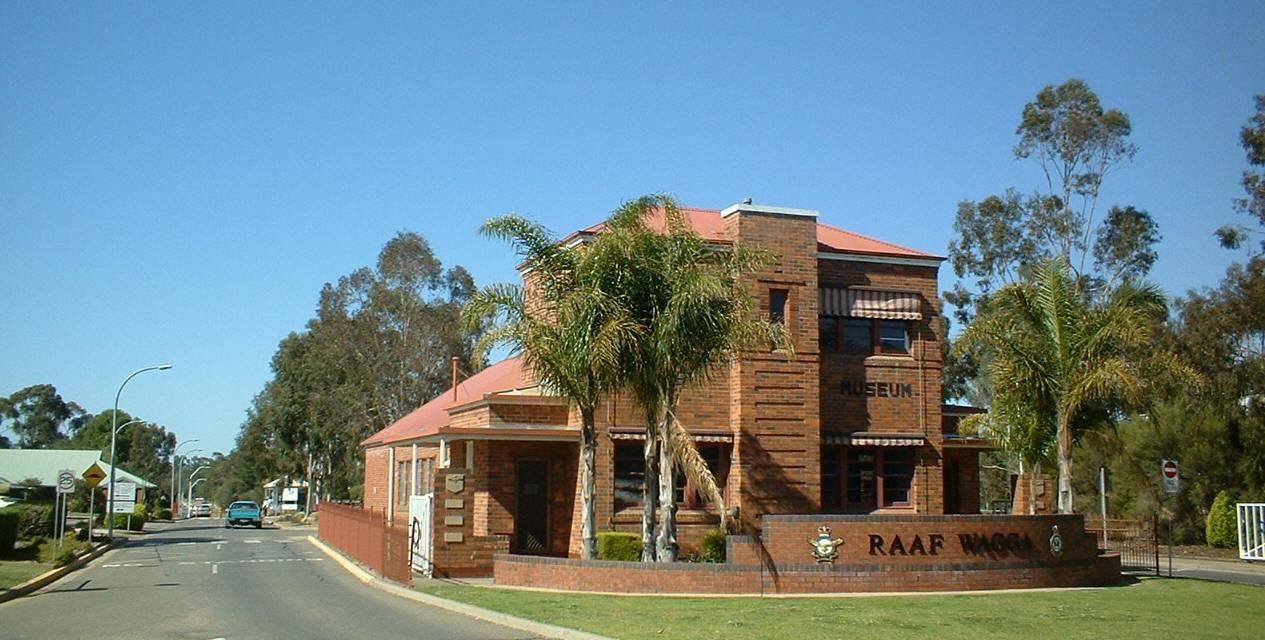
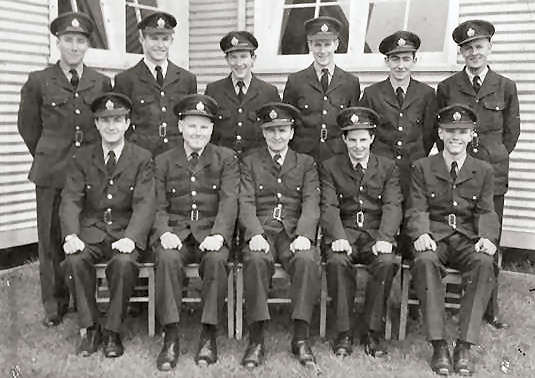


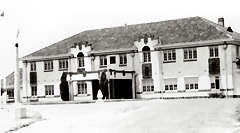
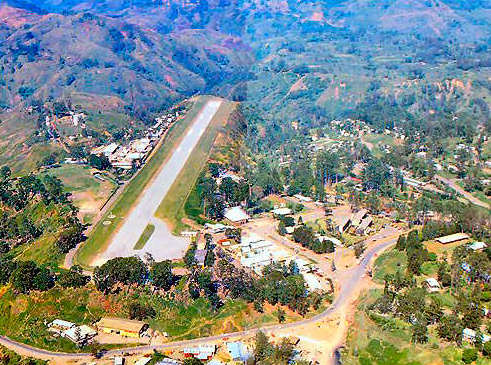
.jpg)


